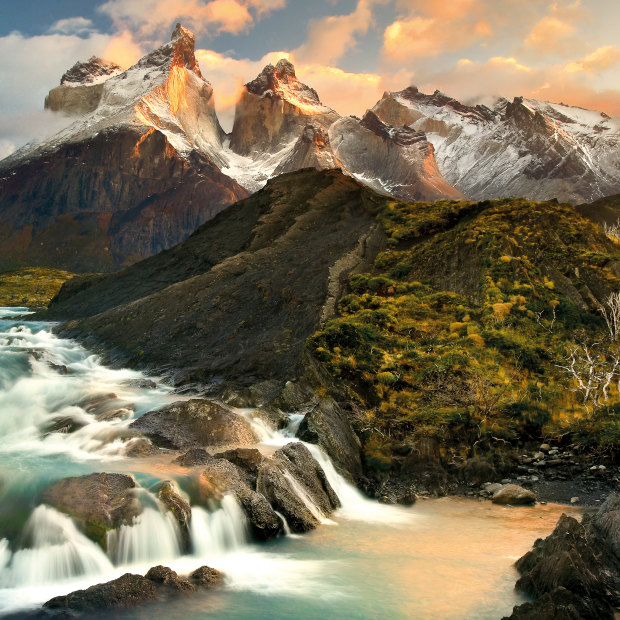
Torres Del Paine.Credit: Jkboy Jatenipat/500px
In our clamorous world with its ever-increasing distractions and demands, nothing is more healing to the mind and spirit than experiencing a special place of peace and quiet.
Feeling your heartbeat slow, your muscles release and your thoughts start to expand and drift. Opening your senses to your surroundings and noticing tiny details you might otherwise have overlooked – this is the joy of quiet places.
Quietude may not always equate to silence. Sometimes it does, such as at One Square Inch of Silence in the United States and other official “Quiet Parks” designated by acoustic ecologists.
The places of almost pure silence include seemingly endless deserts, cathedral-like forests and lonely moors.
But quiet places are often full of the soothing sounds of nature – water running, birdsong, wind singing in the grass or sand, or even the crack and boom of calving ice such as in Antarctica.
They are also man-made places where human voices are hushed from a sense of the sacred – Thai temples, ancient Mayan ruins, museums and libraries.
In this edited extract of Lonely Planet’s new book The Joy of Quiet Places, we highlight pockets where the world’s travails will surely fall away as they inspire in-the-moment awe. May it encourage you to find your own piece of peacefulness.
The open steppe, Kyrgyzstan
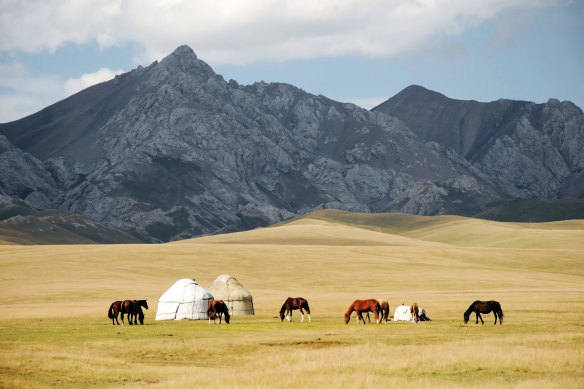
KyrgyzstanCredit: Shutterstock
Envision a landscape without a single wall, fence or pylon to break your line of view. A place where your eye can canter unreined to the barrier-less horizon. Where you rise from the saddle and feel your horse fly across grasslands unchanged since the era of Genghis Khan, the wind streaking fresh and clear across your face. Travel by horse and you’re part of the landscape in Kyrgyzstan. Kyrgyzstan is often said to be one of the least-known countries in the world; a land of sapphire-blue lakes and the snow-dusted Tien Shan (meaning “Mountains of Heaven”) that perches so high that Chinese monk Xuanzang warned travellers of dragons when he wrote about his travels through the country en route to India in the seventh century. Few places in the world offer so much wilderness that is free from jungle-y bugs, or toothy predators.
Don’t miss Yes, you can travel by four-wheel drive, but the engine roars are too loud to listen to the voices of the ancestors. Travelling by horse, if you can, fills you with awe, that most craved of feelings.
Essentials The main international airport in Kyrgyzstan is Manas, 25 kilometres from the capital, Bishkek. A guided tour is the best option. It’s best to ride in June or September, when temperatures are clement. See discoverkyrgyzstan.org
Lamu Island, Kenya
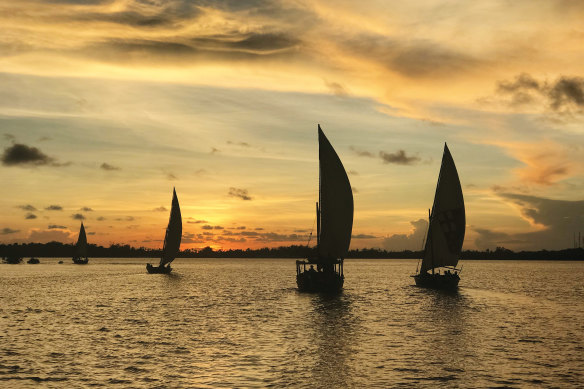
Dhow sailboats at sunset in Lamu Island, Kenya.Credit: Shutterstock
Drift into an African sunset, sailing a traditional Kenyan dhow, Hippo Dhow. It is the antidote to anxiety. Powered by the wind, this boat and those like it – which have been plying the East African coastline for centuries – feel timeless. Lamu Island, off Kenya’s east coast, about 48 kilometres south of Somalia, is home to the oldest continuously occupied Swahili town in East Africa. Time appears to stand still here. Dhows, which once served mainly as a source of transport between Lamu, islands in the archipelago and the mainland, are now a source of income for locals. They take travellers on meditative journeys, where the past and present collide as smoothly as the sun disappears into the Indian Ocean’s darkening blue hues.
Don’t miss Days can be spent shopping the unique local boutiques, indulging in a samosa cooking class, swimming in the calm, clear blue sea, or reading from a guesthouse’s breezy balcony, the silence interrupted only by the lyrical call to prayer from one of the island’s more than 30 mosques.
Essentials The best way to reach Lamu Island is to fly to Manda Airport on Manda Island, just across the channel. Multiple airlines fly here from Nairobi and Kenyan coastal cities. Bookings are required for the cruise. See facebook.com/hippodhow
Torres del Paine National Park, Patagonia, Chile
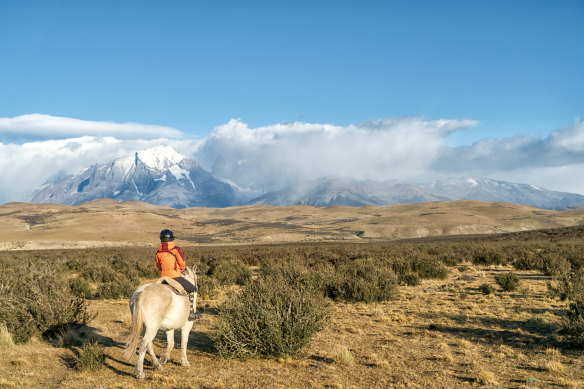
Torres del Paine National Park.Credit: Shutterstock
This is landscape at its most heroic – a huddle of granite mountains rising near the southernmost tip of South America, ringed by blue lakes and buffeted by weather from the Atlantic and Pacific. Vast crowds, accordingly, come to this part of Chile – to admire raging waterfalls, to try to spot pumas and to hike the trails. The way to give them the slip is to regard Torres del Paine from a novel angle – on a kayak, so the only sound you hear is the slosh of your paddle in frigid water. Glide through the glacial Grey Lake, a 14.5-kilometre stretch at the park’s western end. Here, in an easy day’s paddling, you can become intimately acquainted with the Patagonian ice which, aeons ago, sculpted this landscape – and be humbled in its presence.
Don’t miss For another perspective on the Grey Glacier, consider joining one of the hiking tours along its icy spine.
Essentials The gateway to Torres del Paine National Park is Puerto Natales – its airport is served by seasonal flights from the Chilean capital, Santiago. From here, regular buses run into the park. High season is from December to February. Organise a kayaking trip with an operator such as Kayak en Patagonia. See parquetorresdelpaine.cl; kayakenpatagonia.com
Erg Chigaga, Morocco
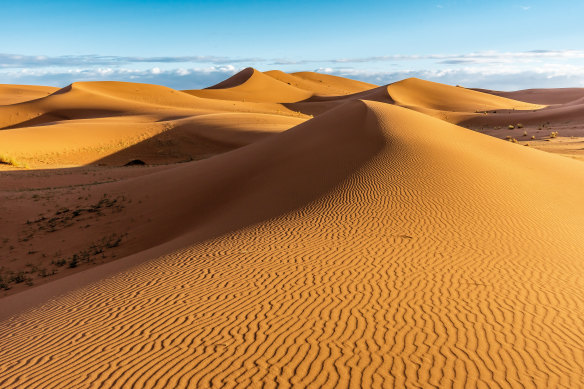
Sand dunes of Erg Chigaga.Credit: Shutterstock
Getting a taste of caravan life in the Sahara Desert. Sleeping on the dunes, safari-style tents form a wide circle, facing the open-air gathering space in the centre of the encampment. The scent of saffron, cinnamon, dried apricots and freshly roasted lamb still hangs in the air after the evening’s feast. Travellers who’ve made the trip out speak in hushed tones beneath the myriad stars of the Milky Way. They sip steaming cups of mint tea and edge closer to the fire – the chill night air a dramatic change from the torrid temperatures of just a few hours ago. Watching the fire dance while listening to the swirling hypnotic rhythms, it’s easy to feel transported into another century – to a time when caravans crisscrossed the Sahara on impressive overland journeys.
Don’t miss Morocco’s natural wonders don’t end at the desert. Hidden in the eastern reaches of the Atlas Mountains, the Todra Gorge is a deep limestone river canyon that narrows in places to just 10 metres wide. Sunlight streams across the soaring cliffs in the morning, making for some memorable quiet time among the towering canyon walls.
Essentials Daily CTM buses connect Marrakesh with both Zagora and M’Hamid. From either town, you can arrange overnight trips into the desert. After the scorching summer heat, October makes an ideal month to visit. Zagora offers a wide range of lodging. See visitmorocco.com/en
Hoh Rainforest, Washington State, US
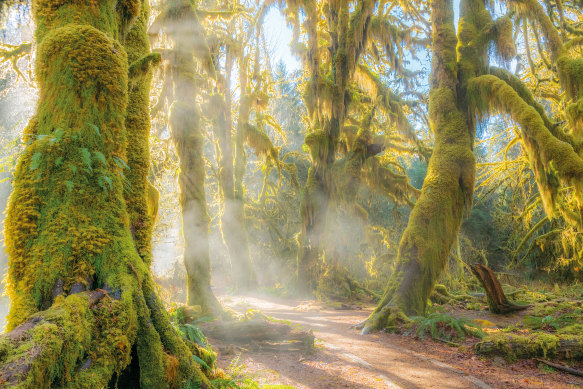
Hoh Rain Forest, Olympic National Park, Washington state.Credit: Shutterstock
Visiting the Hoh Rainforest in the Olympic National Park is not easy. The dense temperate rainforest is in the farthest north-western corner of the US, on the majestic but remote Olympic Peninsula. But hike past the layers of green on the Hall of Mosses Trail to the Hoh River Trail. And then – about five kilometres up – you’ll encounter One Square Inch of Silence. The moniker was given to this spot by Gordon Hempton, an acoustic ecologist who has highlighted the last remaining quiet places in the continental US – all free from the sounds of aircraft, highways or the hustle and bustle of modernity. The Hoh is the reigning champion of silence. For now. Navy jets and social media both threaten the natural silence with human-made additions.
Don’t miss The Olympic Peninsula hosts isolated beaches where you can stretch out and take a long, deep, quiet breath.
Essentials The Olympic National Park is an up to four-hour drive from Seattle’s SeaTac Airport. No roads go through the park, and public transport is extremely limited. September and October see autumnal colours, elk in rutting season and far fewer crowds. See nps.gov
Ilulissat Icefjord, Greenland
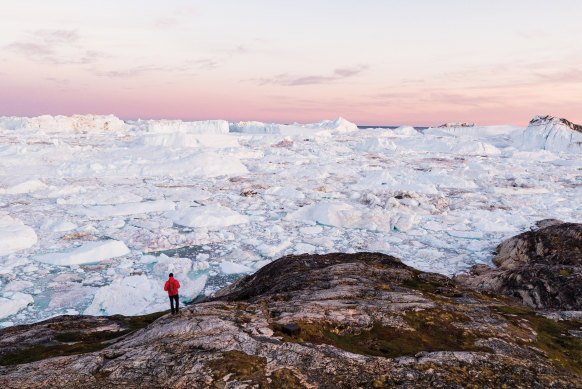
Greenland icefjord.Credit: Shutterstock
Some 250 kilometres north of the Arctic Circle on the shores of Disko Bay, the Greenland ice cap reaches the sea at the Ilulissat Icefjord. Rich in Inuit history and a feeding ground for migrating whales, the Sermeq Kujalleq Glacier is one of the most active and fastest-moving in the world, and has been the object of scientific attention for more than 200 years. It was Greenland’s first UNESCO World Heritage Site. Ilulissat Icefjord Centre is a year-round visitor facility and an architectural gem. It houses exhibitions on ice and evolution on both a local and global scale. Designed by architect Dorte Mandrup, its gently sloping, curved wooden roof serves as an open terrace and viewing platform that overlooks the Icefjord and Disko Bay, leading down to the start of the boardwalk. Heading back towards town, the melancholic howls of sled dogs pierce the air. Back in the reality of day-to-day life, a visit to the Icefjord becomes a humbling experience.
Don’t miss Three main hiking trails of varying difficulties that range from one kilometre to seven circle the Icefjord, affording stunning views.
Essentials Direct flights to Ilulissat are available from within Greenland, Iceland and Nunavut, Canada. Or travel by ship with a cruise line like Adventure Canada. October to April is the best time to view the northern lights. The warmer months bring the midnight sun. See isfjordscentret.gl
Cambrian Mountains, Wales, UK
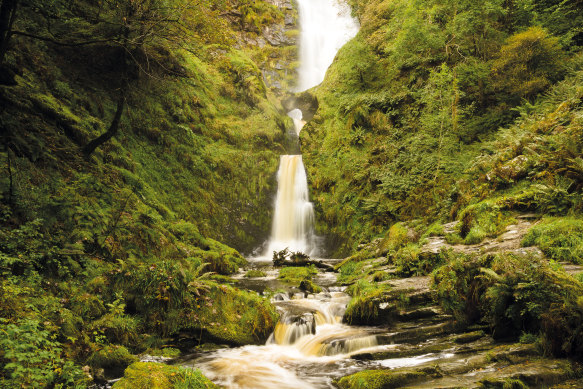
Pistyll Rhaeadr waterfall in Llanrhaeadr, Wales.Credit: Shutterstock
The Cambrian Mountains, comprising a vast, near-untouched expanse of craggy summits, bracken-cloaked, wind-battered mynydd (upland moors), river valleys and ancient, lichen-draped Celtic rainforest, ripples across Wales’ midriff. One of the few pockets of true wilderness in Britain, this lonely, sparsely populated, seldom-visited region is dubbed the “Desert of Wales”. It’s a place where you can shut out the noise of modern life, tune into nature and forget the century we live in. By night, it’s so dark you can barely see your own hand when you hold it up in front of you. The light comes from the night skies, which are some of Britain’s darkest and starriest – bola buwch, as locals say, or as dark as the belly of a cow.
Don’t miss Celestial highlights are best explored on the 80.5-kilometre, self-guided Cambrian Mountains Astro Trail, taking in nine stops awarded the status of Milky Way Class Dark Sky Discovery Site.
Essentials You’ll need your own transport. Gateway towns include Llandovery (in the south) and Llanidloes (in the north). For hiking and camping, the summer months (June to early September) are best. In winter it can be wet, cold and boggy, but terrific for stargazing. See thecambrianmountains.co.uk
Lentiira, Finland

Finland.Credit: Shutterstock
In the blue half-light of a midsummer’s night in Lentiira in Eastern Finland, the forest is unnervingly quiet. So quiet that you barely dare draw breath, move a muscle or press the camera shutter button in case you interrupt the silence. Because when you are waiting for brown bears to rock up at a middle-of-nowhere hide, deep in the cotton-grass-stippled swamps and dense forests that roll over into the wilds of Russia, you must be silent, even if the bears are not. Contrary to every bedtime story you’ve ever been told, bears are shy, and abrupt noises startle them – making them run away. Wrapped in a thick blanket of old-growth boreal forest, the conservation-focused Bear Centre on the Finnish-Russian border is sprinkled with hides from where you can spot some of Europe’s most sensational wildlife.
Don’t miss Spend the night in one of the solo hides, designed for photographers wanting up-close action.
Essentials Finnair flies from Helsinki to Kajaani Airport. From here, it’s a 90- to 120-minute drive to Lentiira. Car hire is available at the airport or the centre can assist with transfers. The bear-watching season is from April to October. The centre has a restaurant, and because the wildlife watching is nocturnal, accommodation can be booked for day sleeping. See bearcentre.fi
Doubtful Sound (Patea), South Island, New Zealand
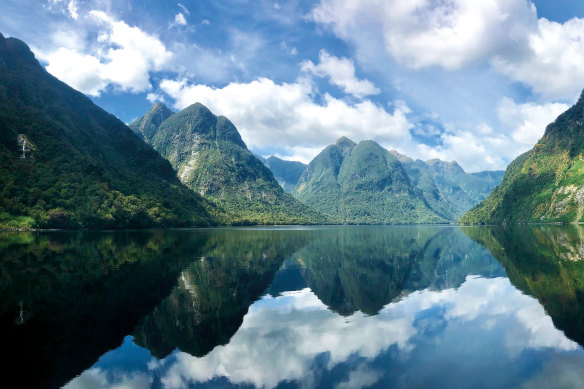
Doubtful Sound, New Zealand.Credit: Shutterstock
Meandering 40 kilometres through Fiordland National Park to the Tasman Sea, Doubtful Sound (Patea) is the second-longest of New Zealand’s fjords. It echoes the beauty of its more famous counterpart, Milford Sound (Piopiotahi), but its remoteness inspires a different kind of awe. The fjord was dubbed “Doubtful Harbour” by Captain Cook but before that, Maori people called it Patea, “the place of silence”. Reaching this unspoiled wilderness is neither quick nor easy. But as your boat plies the waters, the only sounds are the swish of the bow moving through water, and the soft roar of waterfalls that drop down from high cliffs. There isn’t a single human settlement for more than 200 kilometres in either direction. Marine wildlife is abundant: you might spot plump fur seals, Fiordland penguins and humpback whales. It’s a reminder that below the waterline, Doubtful Sound is anything but silent.
Don’t miss On the West Coast of New Zealand’s South Island, Haast River feels like the ends of the Earth. Seaside walking trails lead you to remote sands such as Monro Beach, while small-boat safari tours whoosh you along the river.
Essentials Cruises of Doubtful Sound leave from Manapouri, reached by bus from Queenstown and Te Anau. Many travellers rent a car from their hub airport (usually Christchurch or Queenstown). Go in November to May for spring and summer temperatures; March to May for autumn colours. Do book ahead. See fiordland.org.nz
Tarkine (Takayna), Tasmania, Australia
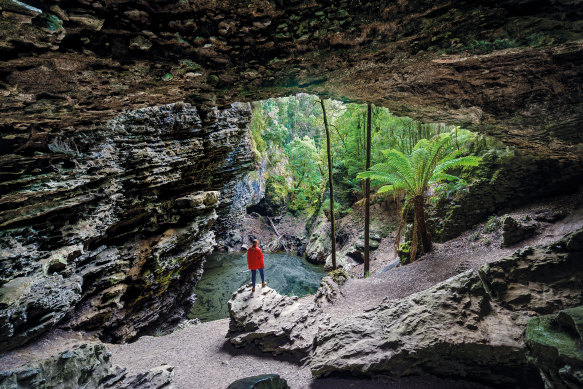
Trowutta Arch in the Tarkine, Tasmania.Credit: Shutterstock
Takayna – the Aboriginal name for the Tarkine – is north-west Tasmania’s lost landscape. It contains Australia’s largest contiguous tract of rainforest and, incredibly, is largely unchanged since it was part of the Gondwana supercontinent 60 million years ago. If you ever wanted to know what the world looked like during the reign of the dinosaurs, this is it.
Experience a jostle of sea-misted dunes, button grass plains and wild rivers lined with 3000-year-old Huon pines, one of the oldest species of tree on the planet. A handful of operators offers small-group walks, some set over multiple days, so the rhythm of the wilderness starts to shape how you are living in the moment, from bathing beneath a rushing waterfall deep in the rainforest, to breathing in the cleanest air in the world (as measured by the United Nations).
Don’t miss The Tarkine Drive is a 130-kilometre loop route on sealed roads that can be done in a day, but it can be better to camp overnight. Drive anticlockwise to finish your trip watching the sunset on the west coast.
Essentials From Hobart International Airport, take a domestic flight to Burnie/Wynyard Airport and rent a car. November to March is peak adventure season, so opt instead for off-peak October or April, when the weather is still mild. See discovertasmania.com.au
FIVE MAN-MADE PEACEFUL PLACES
Old Library, Trinity College, Dublin
Even in the outside areas of Trinity College Dublin, an atmosphere of collegiate calmness prevails, in complete contrast to modern city life beyond the university walls. But in the hallowed halls of Trinity’s Old Library, the degree of quietude takes on a new dimension as an unspoken shush reigns among the shelves and along the length of the aptly named Long Room. See tcd.ie
Maison Hennessy, Cognac, France
At eighth-generation Cognac house Hennessy, the quietude is a poetic prelude to emotive cellar rituals: the floral bouquet atop a cask celebrating the cellar hand who lays his first perfectly stacked row; the skilled calligraphers who scribe with chalk on the barrels. Guided tours peak in paradis (literally “paradise”) – the cellar’s gated inner sanctum, where 35-litre glass demijohns of vintages dating to 1800 are kept under lock and key. See hennessy.com
The Non-Catholic Cemetery, Rome, Italy
The Non-Catholic Cemetery has been in use for three centuries, young by Roman standards. Though it’s colloquially known as the “Protestant” cemetery, Orthodox gravestones abut Buddhist or Zoroastrian, and inscriptions are carved in more than 15 different languages. It is a patch of reflection, history and charm, overflowing with stories under towering cypress trees and cascading wisteria.
See turismoroma.it
Private temple, Hampi, India
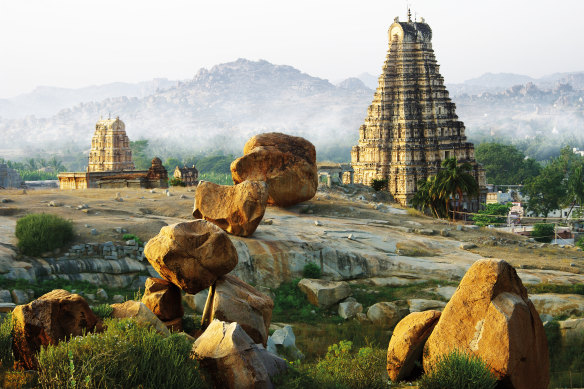
Hampi and its strange landscape.Credit: D’July/Shutterstock
Hampi may be one of the most celebrated ancient sites in India, but you can find a private sanctuary where you can bask in silence in the South Indian sun. Away from the famous-name sights, scattered out among the boulders, the frames of long-forgotten temples and roofless pavilions crown rounded outcrops. The reward for strenuous effort is the invigorating experience of standing in the sun-seared remains of a shrine that may have been empty for 400 years, looking out over an abandoned city. See incredibleindia.org
Mission Point Lighthouse, Michigan, US
Mission Point Lighthouse is one of 129 lighthouses in Michigan, home to the highest number of any US state. Government operated from 1870 to 1933, now, you can stay a week in the lighthouse as you join volunteer keepers to help oversee the property from May to October, though duties – like running a tiny gift shop and museum on-site – are not so strenuous, leaving plenty of time for quiet contemplation of the bucolic coastal surroundings. See missionpointlighthouse.com
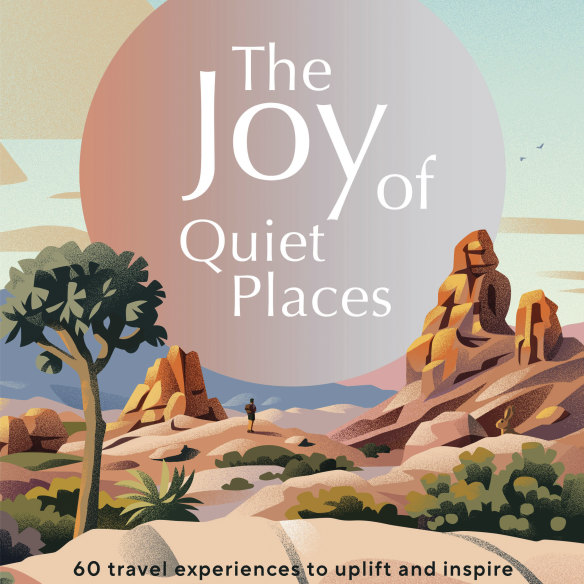
The Joy of Quite Places, published by Lonely Planet.
The Joy of Quiet Places is published by Lonely Planet ($44.99. shop.lonelyplanet.com)
Edited extract by Julietta Jameson